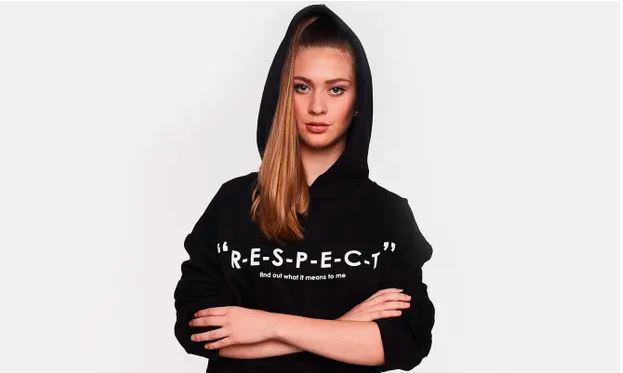What is the true cost of a Zara hoodie? In April 2019, David Hachfeld of the Swiss NGO Public Eye, along with a team of researchers and the Clean Clothes Campaign, attempted to find out. They chose to analyse a black, oversized top from Zara’s flagship Join Life sustainability line, which was printed with lyrics made famous by Aretha Franklin: “R-E-S-P-E-C-T: find out what it means to me”.
This was no simple assignment. It took several people six months, involved badgering Zara’s parent company, Inditex, over email, slowly getting limited information in return, and interviewing dozens of sources on the ground in Izmir, Turkey, where the garment was made. The researchers analysed financial results and trading data, and consulted with experts in pricing and production. It was, Hachfeld says on the phone, with dry understatement, “quite a huge project”.
Their research suggested that the biggest chunk of the hoodie’s retail price – an estimated €10.26 – went back into Zara, to cover retail space and staff wages. The next biggest slice, after VAT at €4.44, was profit for Inditex/Zara, at €4.20. Their research suggested that the textile factory in Izmir received just €1.53 for cutting the material, sewing, packing and attaching the labels, with €1.10 of that being paid to the garment workers for the 30-minute job of putting the hoodie together. The report concluded that workers could not have received anything like a living wage, which the Clean Clothes Campaign defined, at the time the report was released, as a gross hourly wage of €6.19.
When the research was covered by the media at the time, Zara said the report was “based on erroneous premises and inaccurate reporting”, that the €7.76 sourcing price was wrong and that the workers were “paid more than the amounts mentioned in Public Eye’s report”. But at the time and when I contacted Zara for this article, the company declined to set out in greater detail where the research was inaccurate.
What is clear is that trying to find out the true production cost of a garment is a tortuous and potentially fruitless process – even when assessing a major high street retailer’s flagship “sustainability” line.
Hachfeld points out that Zara is by no means uniquely opaque. It is doing more than many clothing brands and has long-term commitments in place to work towards living wages. “They are launching initiatives and consultations with trade unions. But the question remains: when will they deliver on it?” he says. Vanishingly few retailers guarantee living wages across their vast, complex supply chains. According to the not-for-profit group Fashion Revolution, only two of the world’s 250 largest fashion brands (OVS and Patagonia) disclose how many of their workers are paid a living wage – despite the kind of resources that make billionaires of founders. Forbes estimates that Zara’s founder, Amancio Ortega, is worth $77bn (£55bn) and that H&M’s founder, Stefan Persson, is worth $21.3bn; the Sunday Times puts the wealth of Boohoo’s co-founder, Mahmud Kamani, at £1.4bn.
Throughout fashion, the numbers just don’t add up. High-street clothing has been getting cheaper and cheaper for decades. A major reason why, according to Gordon Renouf, the CEO of the fashion ethics comparison app Good on You, is that so many western brands have “moved from onshore production 40 years ago to larger offshore production”. Often, the countries they have chosen have “much lower wage costs, weaker labour movements and laxer environmental regulations”. Of course, we know all this, but we have also become accustomed to reaping the benefits. Our perception of what clothing should cost – and how much of it we need – has shifted.











